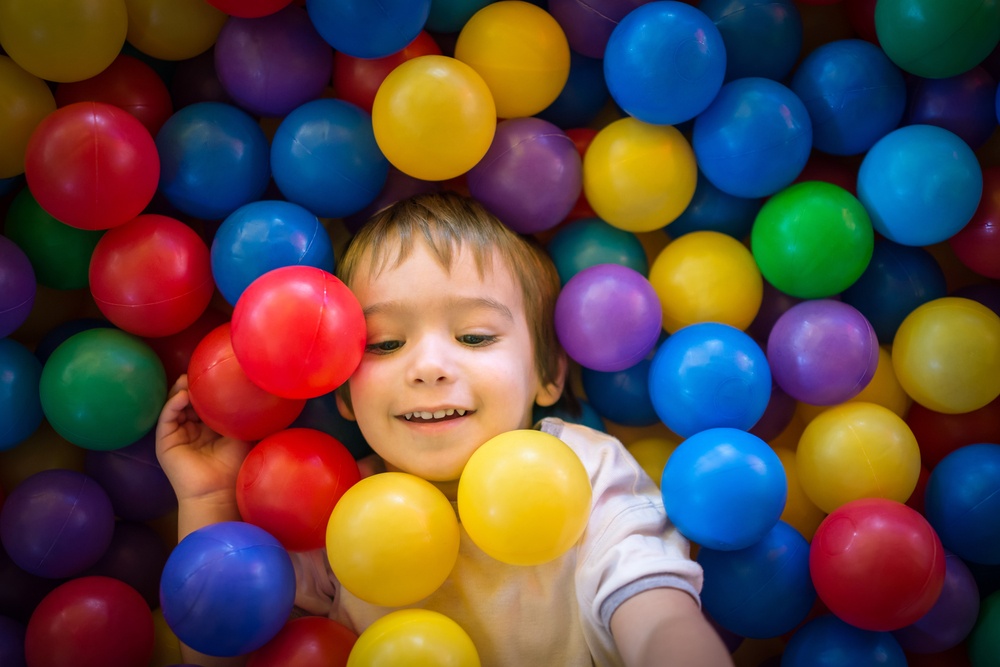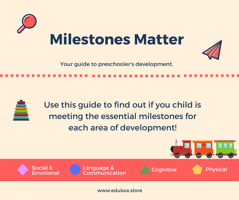Is my kid falling behind?

Read Time ~ 3mins
As parents we are often worried about whether our children are meeting the essential developmental milestones expected for their age. As a reference, we would compare our children with other children of the same age.
However, this comparison can put too much pressure on ourselves and on our children. We may attempt to get our children to "perform" certain skills that they just aren't ready to do yet.
The good news is children do not all grow and develop at the same pace. What many parents fail to realize is that there is a huge range of typical skill development. While some children may recite their alphabet at age two, others may not until age 3. While some children may be drawing pictures of trees and people at age 3 ½, others may not do so until age 4 ½. All children grow and develop, for the most part, in the same order, but go through the stages at their own stride.
'Average Age' vs 'Typical Range'
It is also important to understand the difference between the terms “average age” and “typical range.” Average age simply means that if we looked at 100 babies and what age they were when they began to walk and then we divided it by 100, we’d get an average age of when these babies walked. That is a statistic. What is more important is the range of typical development, which refers to the entire range of when this skill can appear for it to be considered typical. When a skill is completed outside that range, then it is considered atypical.
Still confused?
Let’s break it down in terms of two year olds:
Speech and Language: Mara and Jessica are both 24 months old. Mara has a vocabulary of well over 50 words, while Jessica has a vocabulary of 22 words. Both girls imitate new words and use a combination of gestures and words to communicate their wants and needs. Mara has started to use two word phrases such as “more juice” and “Daddy go,” while Jessica uses only single words such as “cup” and “go.” Both girls have typical speech for two year olds.
Gross Motor Skills: Jessica walks, runs, climbs the ladder to the slide on her own, goes up & down stairs holding the rail, can kick a ball and is starting to catch a ball thrown to her. Mara walks, runs, goes on stairs holding her mom’s hand, but is wary of climbing at the playground and cannot yet catch a ball or throw very well with direction to an adult. Both girls have typical gross motor development for two year olds.
Fine Motor Skills: Jessica can stack 12 cubes, string beads on a shoestring, holds a crayon with a mature grasp and imitates circular scribble, horizontal and vertical lines on paper. Mara stacks about 6 cubes before they fall down and cannot yet string beads without some help from her mom. She imitates circular scribble on paper and holds the paper steady with her opposite hand while coloring, but still uses a fisted grasp on her crayon. Both girls have typical fine motor development for two year olds.
Social/Emotional Skills: Mara is very social and attends child care 5 days per week. She interacts with adults and peers using a combination of gestures and words and she imitates peers in play. Mara separates well from her mother at child care and does not cry when her mom leaves. Jessica does not attend child care. She is sometimes overwhelmed by large groups of children, but does well on her play dates with Mara. She interacts with Mara primarily using gestures, and is often content to play alongside Mara without interacting with her unless they are both fighting over possession of the same toy. Jessica often cries for about 10 minutes if her mom leaves her sight or if she needs to stay with grandma while mom goes shopping. Both girls have typical social/emotional development for two year olds.
Feeding Skills: Jessica uses a spoon and fork at meals and can drink from a straw cup and a small open cup with minimal spilling. She is described as a good eater who tries any new foods her family presents to her. Mara uses a spoon at meals, but will still use her fingers at times because it’s “easier.” She drinks from a sipper cup and a straw cups and has not mastered drinking from an open cup without spilling yet. She is described as a “picky” eater by her family who goes through stages of eating certain foods such as macaroni and cheese or chicken nuggets and refuses to try new foods until they are presented several times to her. Both girls have typical feeding skills for two year olds.
Preschool developmental milestones are those skills and abilities that children can be reasonably be expected to achieve at or by a certain age. It is not a list to hold children by. We are all unique and human development is also unique for each person. Hence, knowing which developmental stage that your child is at can help you plan suitable playtime activities.
Still worried that your child may be falling behind?

We have designed an infographic guide on the essential skills for each area of development that a toddler could potentially achieve for his age group.
"Milestones Matters: Key Developmental Stages for Preschoolers" will give you an easy-to-refer reference point.



